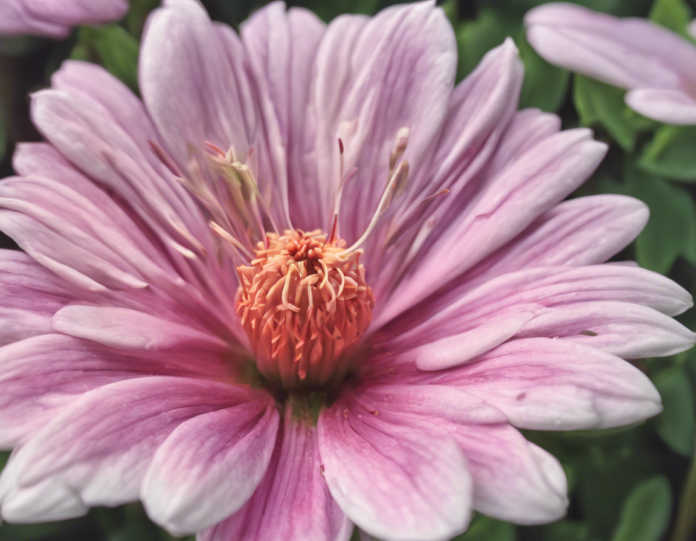Introduction
Flowers are the reproductive structures of angiosperms, playing a vital role in the plant’s ability to reproduce. Through a process known as flowering or florogenesis, plants produce flowers that contain the male and female reproductive organs necessary for sexual reproduction. In this article, we will delve into the intricate functions of a flower in plant reproduction, exploring the various parts of a flower, their roles, and the process of pollination and fertilization.
Anatomy of a Flower
A typical flower consists of four main parts: the sepals, petals, stamens, and pistil. Each of these parts plays a critical role in the reproductive process of the plant.
-
Sepals: The sepals are the outermost parts of the flower, usually green and leaf-like. They protect the flower bud before it blooms and provide support to the petals once the flower opens.
-
Petals: The petals are often brightly colored and scented to attract pollinators like bees, butterflies, and birds. They may also have patterns or nectar guides to direct the pollinators towards the reproductive organs of the flower.
-
Stamens: Stamens are the male reproductive organs of the flower, composed of the anther and the filament. The anther produces pollen, which contains the male gametes or sperm cells.
-
Pistil: The pistil is the female reproductive organ of the flower, consisting of the stigma, style, and ovary. The stigma is the sticky surface where pollen grains land, the style is the elongated tube that connects the stigma to the ovary, and the ovary contains the ovules, which are the female gametes or egg cells.
Functions of a Flower
-
Pollination: Pollination is the transfer of pollen from the anther of a stamen to the stigma of a pistil. This process can occur through various mechanisms, including wind, water, insects, birds, and other animals. Successful pollination leads to fertilization and the production of seeds.
-
Fertilization: After pollen lands on the stigma, it forms a pollen tube that grows down the style and enters the ovary. The male gametes travel through the pollen tube to reach the ovules, where fertilization takes place. This results in the formation of a zygote, which develops into a seed.
-
Seed Production: Once fertilization occurs, the ovules develop into seeds within the ovary. The ovary may then mature into a fruit, protecting the seeds and aiding in their dispersal. Seeds are essential for the next generation of plants to grow.
-
Fruit Development: In many plants, the ovary matures into a fruit after fertilization. Fruits come in various forms and play a crucial role in seed dispersal. They may be eaten by animals, carried by the wind, or float on water to new locations where they can germinate and grow into new plants.
Pollination Mechanisms
-
Insect Pollination: Many flowers have evolved to attract insects like bees, butterflies, and beetles as pollinators. They often have bright colors, strong scents, and rewards like nectar to entice insects to visit them. Pollen grains stick to the bodies of insects as they move from flower to flower, facilitating cross-pollination.
-
Wind Pollination: Some plants, like grasses and trees, rely on the wind to carry their pollen from one flower to another. These plants often have small, inconspicuous flowers with no need for showy petals or nectar. Wind-pollinated flowers produce large quantities of lightweight pollen to increase the chances of successful pollination.
-
Animal Pollination: Birds, bats, and other animals also play a crucial role in pollination. Flowers that are adapted for animal pollination are often large, colorful, and have a strong fragrance to attract their specific pollinators. These animals inadvertently pick up pollen on their bodies as they feed on nectar, transferring it to other flowers as they forage.
Frequently Asked Questions (FAQs)
-
Q: What is the purpose of a flower in a plant?
A: Flowers serve as the reproductive structures of plants, containing the male and female reproductive organs necessary for sexual reproduction. -
Q: How do flowers facilitate plant reproduction?
A: Flowers attract pollinators, produce pollen and ovules, and enable fertilization and seed production, essential for plant reproduction. -
Q: What are the male and female parts of a flower?
A: The stamens are the male reproductive organs, while the pistil is the female reproductive organ of a flower. -
Q: Why are petals brightly colored?
A: Petals are often brightly colored to attract pollinators like bees, butterflies, and birds for successful pollination. -
Q: What is the role of pollination in plant reproduction?
A: Pollination is the transfer of pollen from the anther to the stigma, leading to fertilization, seed production, and fruit development in plants.
In conclusion, flowers play a crucial role in the reproductive success of plants by facilitating pollination, fertilization, seed production, and fruit development. Their diverse forms and functions have evolved to attract various pollinators and ensure the continuation of plant species. Understanding the function of a flower in plant reproduction sheds light on the intricate processes that allow plants to thrive and reproduce in their environments.
